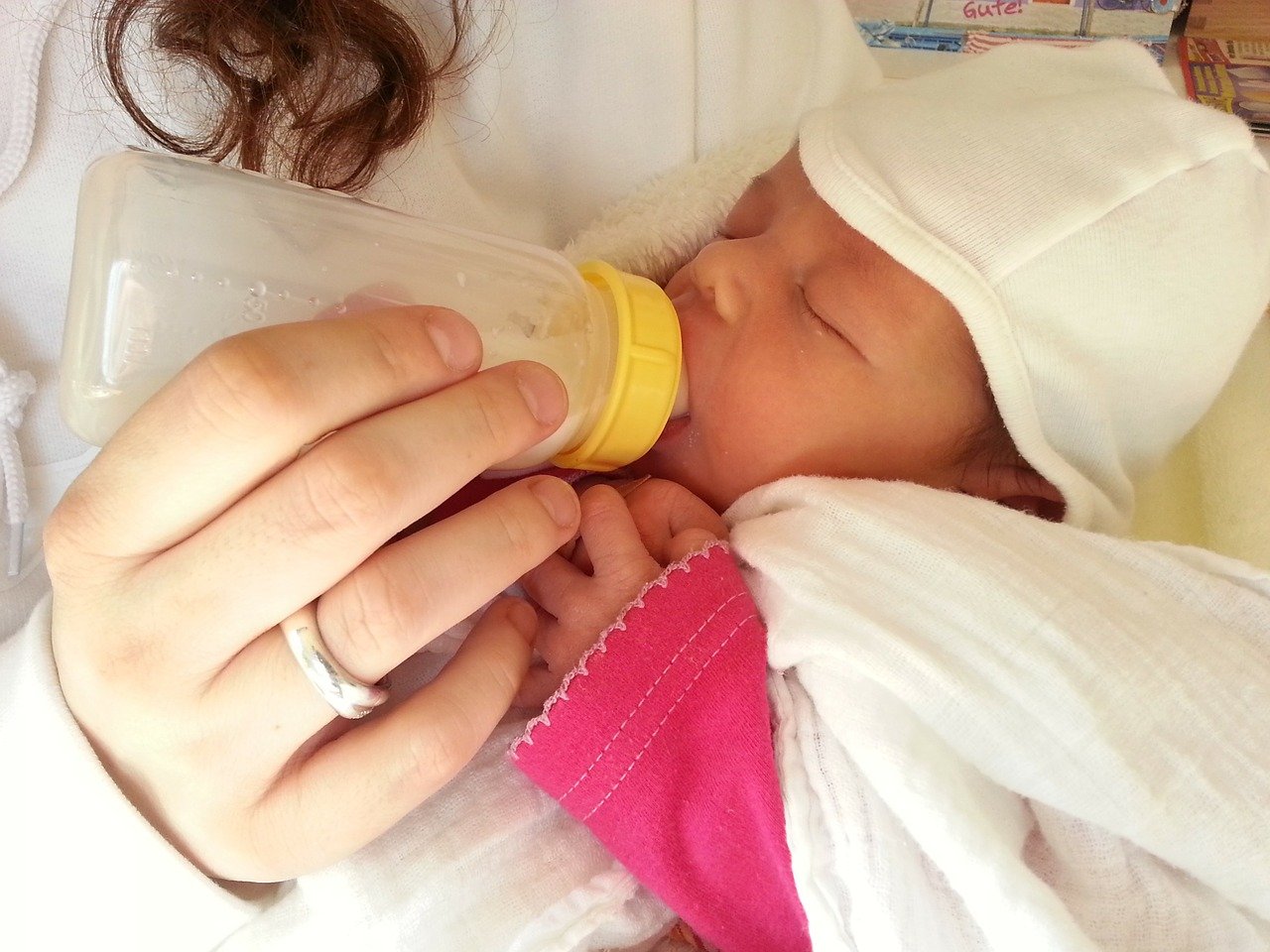All You Need to Know About Baby Formula
What is a formula?
The formula is an alternative to breastfeeding that is made from dried milk powder, vitamins and minerals. It is mixed with cool boiled water or filtered water in a bottle or cup fed to babies. The nutrients contained in formula help infants grow during the first six months. After six months, they can ingest solids, but a baby should not have cow’s milk until they are one year old.
Cow’s milk provides protein, and fat is provided from vegetable oils. Other than cow’s milk, some formulas are made from other sources, such as soybeans or rice. These specialty formulations have been updated to make them easier to absorb or ideal for babies who do not handle protein or lactose from cow’s milk. Specialty formulations can be used only with a healthcare professional’s instruction.
How is formula different from breast milk?
The formula is a complete food for babies with nutrients, while some formulas contain extra ingredients to match breast milk.
The major difference is that breast milk comprises antibodies, which help protect the baby against various diseases. Unlike formula, whose nutritional quality remains the same, breast milk nutrition adapts over the baby’s lifetime. There’s even less protein in breast milk than in formula. Choosing a lower-protein formula can reduce your baby’s likelihood of being overweight or obese as they grow older.
Types of baby formula
It is essential to follow strict nutritional and hygiene requirements for any formula. With vitamins, minerals and vegetable oils added, most baby formulas are made from dried cow’s milk unless the formula is manufactured to make it easier to for infants to digest and absorb the nutrients.
There are three types of formula:
The milk-based formula contains vegetable oils, iron, vitamins and minerals added and made from cow’s milk.
Soy-based formulas are derived from soybeans and have added vegetable oils and nutrients.
Specialty formulations are made from ‘predigested’ cow’s milk, and the protein is omitted or decreased. A variety of hypoallergenic formulations are available as well. The majority of specialty formulas are intended for children who are milk intolerant or allergic to cow’s milk. The formula may also be the best option for infants with a food protein allergy or some digestive malabsorption or intestinal issue. Specialty formulations may also be used for particular cultural or religious purposes.
Other types of formula include:
Starter formulas: These are ideal for infants up to 6 months of age. Stage 2 or follow-on formulations are preferred after this age since they also have higher iron content. There is, however, no significant advantage in turning to these later-stage formulations.
Anti-reflux or AR formulas: These have an additional thickener that helps hold the milk in the infant’s stomach and reduces reflux risk.
Some formula has other compounds added to make them similar to breast milk. However, it does not mean that the baby’s body will ingest or absorb these substances in the same way that if they were breastfed, they would. Famous examples or additives are prebiotics, probiotics and antioxidants, long-chain polyunsaturated (LCP) acids.
Tips for choosing a baby formula
Before trying any other kind of formula, you should feed your healthy babies born full-term and are not breastfeeding with a cow’s milk-based formula. Check the price against the ratio of water to formula scoops. It will give you a clear indication of how long it will last. It would be best to read the label to ensure it is the right formula for your toddler’s age. Additionally, look for a formula with less protein to reduce your baby’s chance of becoming obese or overweight. Finally, when you have the right formula, you should give your baby a few days to adjust to the formula. Also, avoid changing between formulas.
A guide to preparing formula
To ensure you understand how much water and how many scoops you need to mix, read the formula bottle details.
- Please wash your hands well and dry them.
- Make sure that you have a clean surface and a place where you can prepare the formula.
- In a kettle or on your burner, boil fresh tap water. Let the water cool until it’s lukewarm or at room temperature. You need a new, simple, and unopened bottled water (not natural or sparkling mineral or soda water).
- Pour the water into bottles that are already sterilized. Use the required amount of water for the needs of your kid.
- On the bench, tap the bottle so that the formula powder settles into the water.
- With the teat and screw cap, close the bottle. Shake well in the bath until the whole formula is well dissolved.
- Before offering it to your infant, measure the temperature of the formula on your wrist.
Things to look out for when choosing formula
Some babies are especially susceptible to cow’s milk-based formula or allergic to it. The protein in cow’s milk usually causes them to respond. The hydrolyzed solution, as an alternative, is also recommended. The hydrolyzed formula requires a protein from cow’s milk that has been broken down into smaller particles. “Alternatively, you can choose a formula that is based on goat’s milk instead, from a reputable brand and is also certified organic, such as Kendamil Goat Stage 1.
Various advanced formulations fit babies with allergies to cow’s milk or soy formula allergies. However, these alternatives can be costly. Talk about getting a prescription for a specialty formula with your GP or baby’s pediatrician, as this will dramatically reduce the expense.
Conclusion
It would be best if you never gave a hot formula to your kid. Put a few drops on your skin to check if the formula is burning and not too hot. The formula should be lukewarm. It would be best never to heat bottles in the microwaves since it heats foods and liquids unevenly. It may have different hot areas that can burn your infant. The above will help any new mother ensure their baby grows with the best formula offering adequate nutrients. Companies that produce Alula S26 Formula suggest that the above specifications are ideal for infants.


